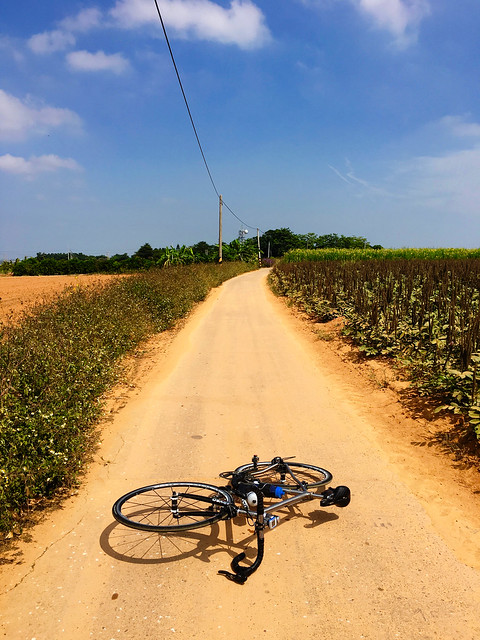
This past ride I am calling, A Tour Through Other People's Wars, which is an intentionally intentionally deceptive title, but I will be addressing that further in the body of this post. It was a fantastic slow ride that, for me, really demonstrates how a little local knowledge can turn an otherwise uninspired ride on a hot day into a cycling gem.

I actually started out at an active archaeological dig (the location of which I will not disclose) and made my way up to the top of Taichung's Dadu Shan (大肚山) and crept along the small farming roads near the Taichung Metropolitan Park. After clearing the park and military installation, I took the immediate left and stuck out into the red clay of the sweet potato farms that checker across the plateau above Taichung city. It can be a bit of a game of GPS BINGO to navigate the right roads without rolling down the hill, but the scenery can be pretty stunning for being in the midst of Taiwan's second largest city.

The entire crest of the hill is dotted with military infrastructure that dates back to the Japanese colonial era (1895-1945) with the occasional concrete edifice from the old Taichu Coastal Defense network and the latter Anti-airbourne Defense System; a system of concrete bunkers designed to repel a Chinese airborne invasion. This Cold War era relic from Chiang Kai-sheck's obsession with wasteful military expenditure for the sake of accruing more U.S. Aid was oddly surrounded by large wooden posts more reminiscent of Fort Clatsop than a Cold War fortification. The extra layer of razor wire on the inside told me there may be more afoot than a concrete bunker. The mobile SAMs around the corner seemed to confirm that this property was still very active.
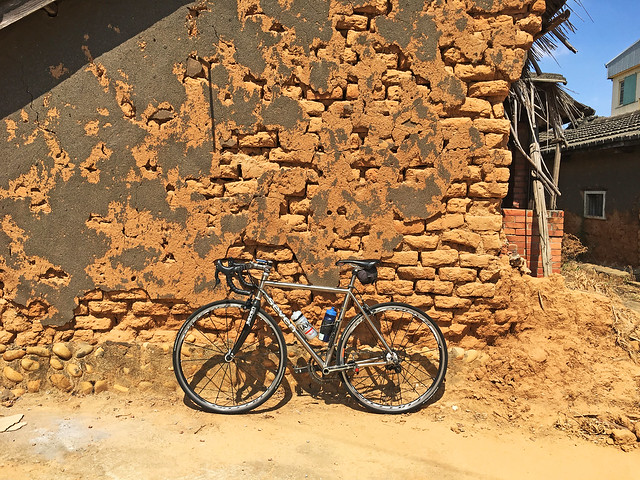
I bobbed along the dusty backroads along the hill before descending down past a landfill near a cemetery to the Taichung Route 63... The gangster-ist road in Taichung. It was so gangster there was even the pristine carcass of a white Nissan Cefiro on a pedestal in one of the dilapidated properties that line the otherwise fine road that lands at the gate of the Taichung International Airport. Just beyond the airport I ducked onto another side road with its crumbling mud-brick buildings toward my destination.
I had been hoping to get a closer look at a neighborhood noted on the map as the "Savage City" (番仔成).
This "Savage City" was established in 1754 after the border between indigenes and Han settlers had been redrawn. A subgroup of Papora speaking people moved up the hill from what is now Qingshui and established a satellite village consisting of approximately 20 families. The village was surrounded in the traditional style by a palisade of defensive bamboos and a small moat.
I immediately noticed groves of thick bamboo lining one edge of town and several old buildings that had been built sometime around the Japanese census of 1905, which registered 20 households in the village.
If it hadn't been so hot, I may have loitered a bit longer. I did stop inside a local temple that has been built around an older site in the rear--sacred rock that is said to have been there since time immemorial.
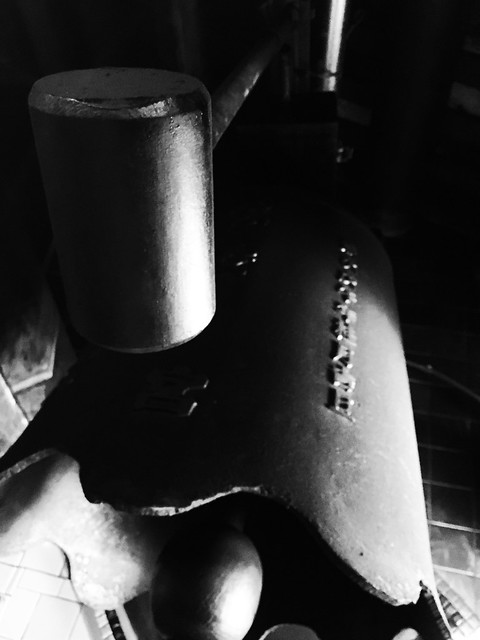

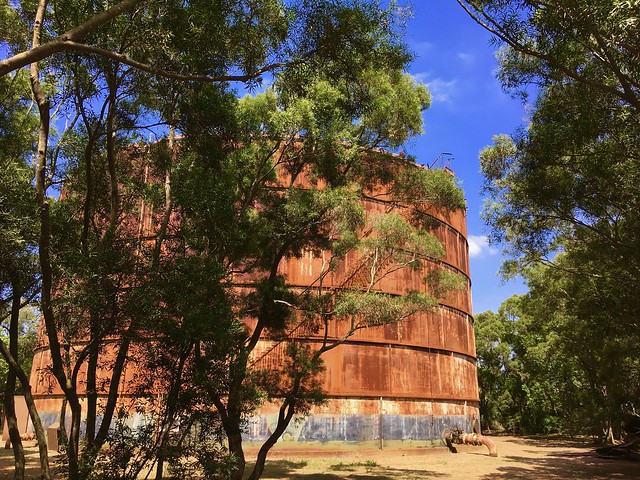
Just to the west of the village I was a large rusty structure poking up from behind some trees.
There in a lavish park--lavish by Taiwan hinterland standards anyway-- was the rusting hulk of a fuel container. It was one of seven containers built in 1966 as a fuel depot to service American B-52 bombers for their sorties over North Vietnam. The Americans would pump the fuel from the tiny Gaomei port and run it through pipes all the way to the top of the hill. I still have no idea how the negotiated the shallow mudflats. There is now no remnant of the pipes, but this lone tank remains.
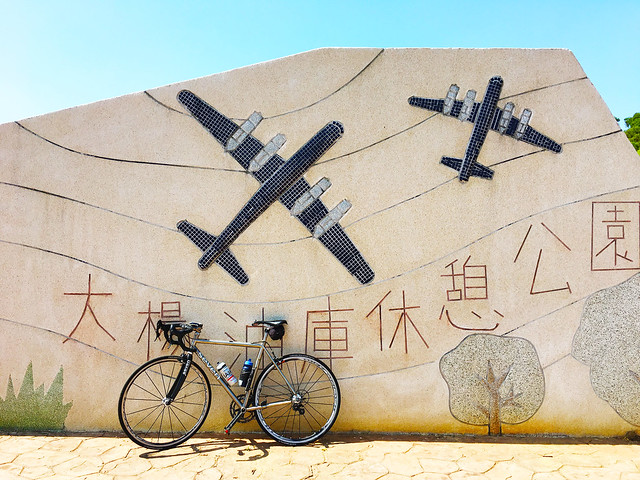
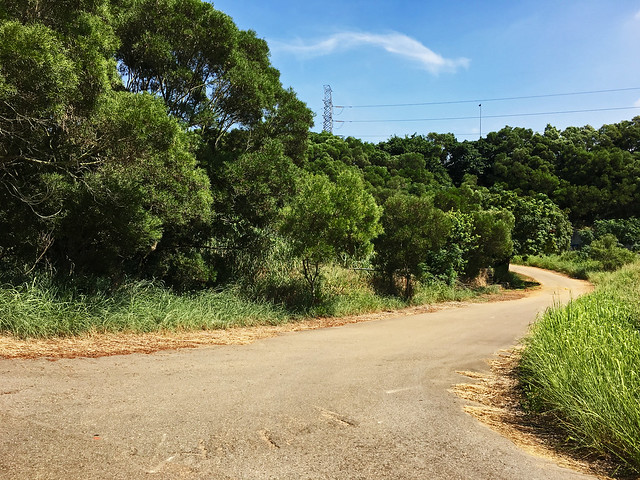
I soon dropped off the mountain along a snaking series of roads that cut through cemetery land and into some quiet gullies beneath the No. 3 Freeway. It is quite pleasant down there under the herds of weekenders off to someplace where they could be in a crowd.


Just down the hill hear the Taichung Velodrome I passed an old munitions cave used by the Japanese to house explosives for the coastal defense network. Taiwanese labor would haul shells and supplies to the hilltops on a long concrete stairway with a smooth track in the middle for the supplies.
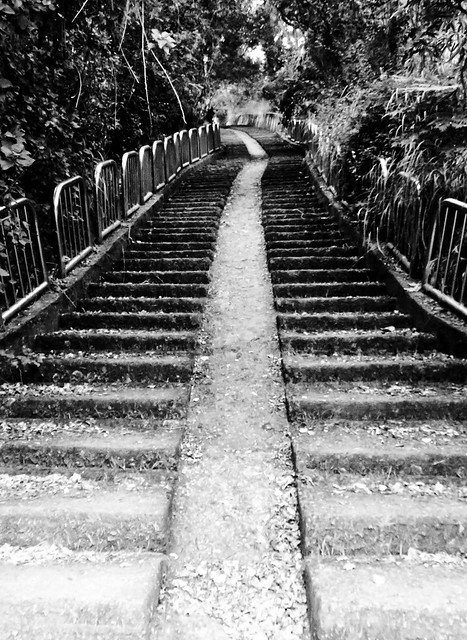
I rolled further down the hill to the Niu Ma Tou cultural site is located. The Niu Ma Tou culture is a 4500-3500 year-old culture of the Taichung area. Pottery sherds were located during the excavation of the Japanese Shito Shrine in Qingshui. The site was later turned into a KMT era military base. After slow rolling through Qingshui I followed the old Coastal Defense Road through Shalu and Shuili She (水裡社).
The old village of Shuili She appears in the Dutch records as Bodor. The Village of Bodor was annihilated by the armies under the Ming loyalist, Cheng Cheng-gong during his war against the Qing. Only a handful of villagers escaped the Cheng forces alive.
I made a few more turns before retreating up the hill for home.
The ride was hardly any distance at all, and yet I covered over 400 years of "other people's wars". When I use this term I am making a direct reference to the way many Taiwanese have positioned the Taiwan experience as one of victimhood between the ambitions of greater powers.
I often recall seeing a group of Taiwanese Americans who put on a skit... and it is a skit I have seen multiple times in some form or another, in which the actors transform from indigenes to Han farmers under successive oppressive regimes. They always cast themselves as the victim. While in one way this can be true. This is a narrow and misleading narrative that fails to capture the nuance in which Taiwanese fall on both sides of the dichotomy between the oppressor and the oppressed. Taiwanese both suffered and benefitted from "other people's wars". Whether it was farmland opened from a genocide or colonization, infrastructure and paying jobs from the military, or as recently as when the US was carpet bombing North Vietnam, Taiwanese were happily enjoying the American military economy in Daya. When Taiwanese can accept their dual roles in history, greater gains in understanding between all peoples in Taiwan may take place.
